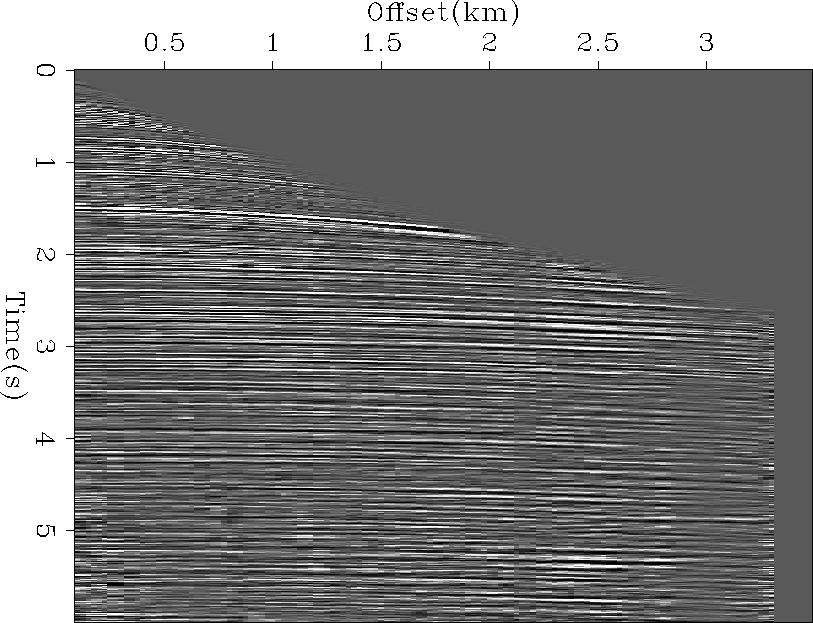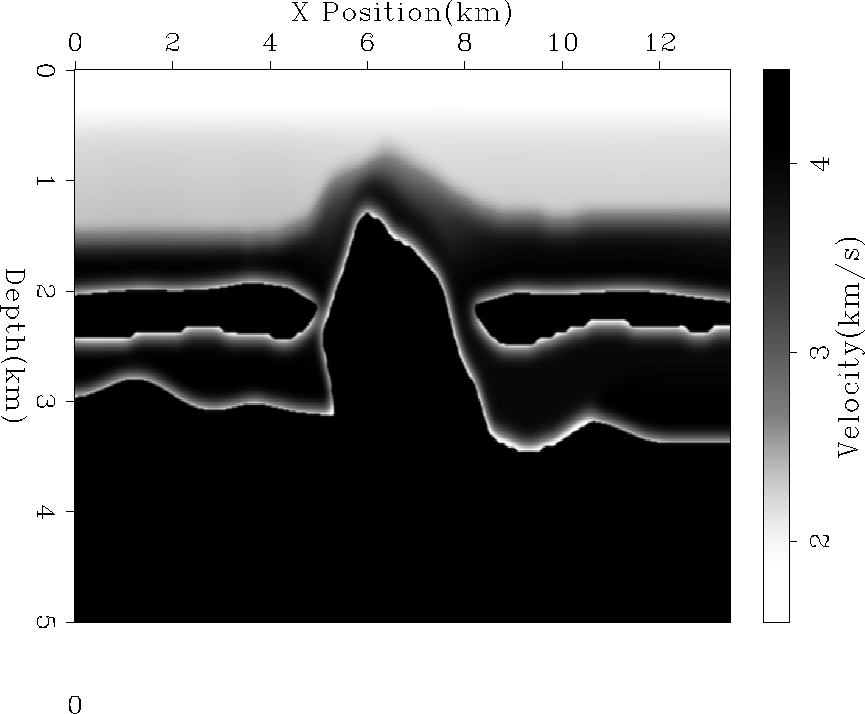![[*]](http://sepwww.stanford.edu/latex2html/foot_motif.gif) method Ehinger and Lailly (1995); Jacobs et al. (1992)
The velocity structure shows typical North Sea behavior with velocity following
structural layers.
method Ehinger and Lailly (1995); Jacobs et al. (1992)
The velocity structure shows typical North Sea behavior with velocity following
structural layers.
The tomography method described in the preceding section is suited for a particular class of problems. Using rays and picking reflectors requires that the dataset it is applied to be relatively clean with strong, fairly continuous reflectors. Formulating the tomography in tau is universally advantageous, but is most advantageous in environments where we have a velocity inversion. Finally, steering filters are most effective when velocity follows structural dip, ruling out most Gulf of Mexico environments.
The North Sea dataset provided to SEP by Elf Aquitaine Fomel (2000); Sava and Fomel (2000); Vaillant and Sava (1999) meets
all of these criteria.
The data is very clean (Figure 2) with strong reflectors
that are generally continuous. The data contains a chalk layer which
causes a velocity inversion above the salt dome.
The initial velocity model (Figure 3)
was created by Elf using the
S.M.A.R.T![[*]](http://sepwww.stanford.edu/latex2html/foot_motif.gif) method Ehinger and Lailly (1995); Jacobs et al. (1992)
The velocity structure shows typical North Sea behavior with velocity following
structural layers.
method Ehinger and Lailly (1995); Jacobs et al. (1992)
The velocity structure shows typical North Sea behavior with velocity following
structural layers.
|
elf-shot
Figure 2 A shot gather from the Elf Aquitaine dataset. |  |
|
elf.vel0
Figure 3 The initial velocity model for the 2-D line. Note how velocity follows structural dip and the velocity reversal in the shale layer above the salt dome. |  |
The dataset is a 3-D marine acquired using three cables with 100 meter spacing and geophones every 25 meters. In this paper we will be dealing with a 2-D subset of the 3-D dataset. The line was chosen coincide with a 2-D synthetic dataset Malcotti and Biondi (1998); Prucha et al. (1998). The subset was created by forming partial stacking and then applying Azimuth Moveout (AMO) Biondi et al. (1998a) to partial stacked CMP gathers.